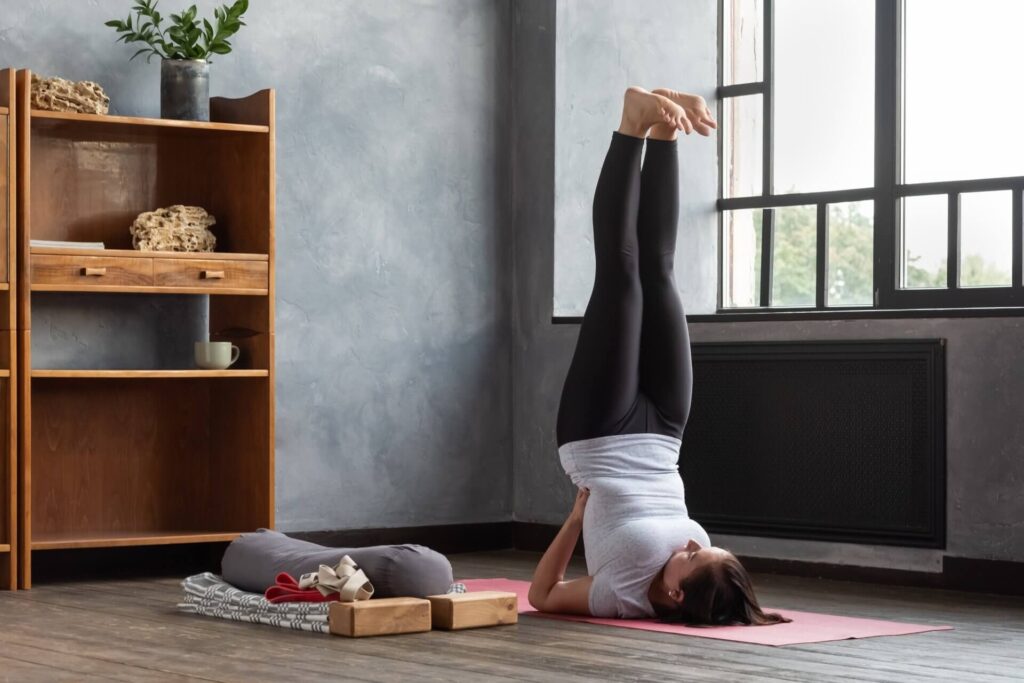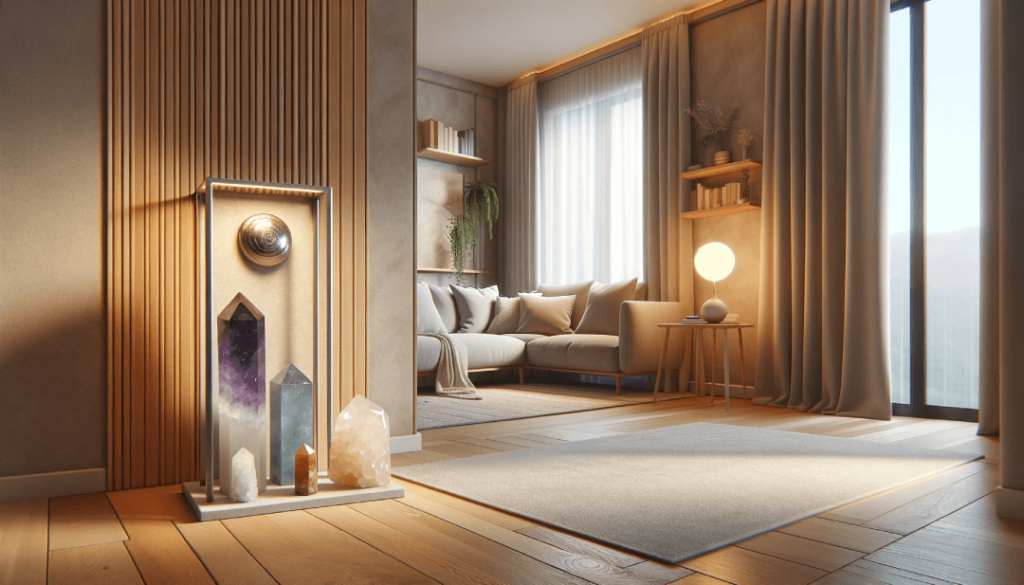“In Viparita Karani, we surrender to the support of the earth, letting go of stress and finding renewal in stillness.”
Legs-Up-The-Wall Pose, known as Viparita Karani in Sanskrit, is a gentle and accessible yoga pose suitable for beginners. It offers a restorative experience that soothes the body and calms the mind. Whether you’re looking to relieve stress or simply unwind, this pose is an excellent addition to your yoga practice.
Viparita Karani Meaning
The name “Viparita Karani” combines “viparita,” meaning “inverted” or “reversed,” and “karani,” meaning “action” or “doing.” The pose symbolizes the act of reversing the flow of energy in the body and creating a sense of balance and tranquility.
Benefits of Legs-Up-The-Wall Pose
Legs-Up-The-Wall Pose provides a range of benefits for beginners:
- Stress Reduction: It promotes relaxation and reduces stress by activating the parasympathetic nervous system.
- Leg and Lower Back Relief: The pose can alleviate tension and discomfort in the legs, lower back, and hips.
- Improved Circulation: Elevating the legs enhances blood circulation, benefiting the heart and lymphatic system.
- Restful Sleep: Regular practice can improve sleep quality and alleviate insomnia.
- Mental Clarity: The pose fosters mental clarity and a sense of calm, making it an excellent choice for relaxation and meditation.
Step-by-Step Instructions Legs-Up-The-Wall Pose

- Preparation: Find a clear wall space and place your yoga mat perpendicular to the wall.
- Sit Sideways: Sit with your right side against the wall, with your knees bent and feet on the mat.
- Swing Legs Up: Begin to pivot your body and swing your legs up onto the wall while keeping your upper body on the mat.
- Align Hips: Scoot your buttocks as close to the wall as comfortable while ensuring your tailbone is supported.
- Legs Up: Extend your legs up the wall, allowing your heels to lightly rest against the wall.
- Arms Open: Open your arms to the sides with your palms facing up, creating a comfortable and open position for your chest.
- Relax and Breathe: Close your eyes, relax your facial muscles, and focus on your breath. Breathe deeply and slowly.
- Hold and Enjoy: Remain in the pose for 5 to 15 minutes or as long as desired, savoring the sensation of relaxation.
Tips For Deeper Practise Legs-Up-The-Wall Pose
To deepen your practice of the Legs-Up-The-Wall pose, here are a few tips to keep in mind. First, find a quiet and peaceful space where you can fully relax. Next, grab a yoga mat and a cozy blanket for added comfort. As you settle into the pose, take slow, deep breaths and let your body melt into the support of the wall.
Yoga Music
You can also enhance your experience by playing some soothing yoga music in the background. Allow yourself to surrender and let go of any tension, knowing that this pose is a wonderful opportunity for deep relaxation and rejuvenation.
Preparation Poses Legs-Up-The-Wall
- Mountain Pose (Tadasana): Mountain Pose serves as an excellent preparatory pose for Legs-Up-The-Wall Pose (Viparita Karani) and helps you establish a strong foundation. Stand with your feet together, engage your core, and align your spine, shoulders, and head in a straight line. This pose helps you focus on balance and alignment, which are key elements of Legs-Up-The-Wall Pose.
- Squat Pose (Malasana): Malasana, or Squat Pose, is an excellent way to prepare for the seated position of Legs-Up-The-Wall Pose. Begin in a squat with your feet wider than hip-width apart and your toes turned slightly outward. This pose helps open up your hips and increase flexibility in your ankles, which can be beneficial when transitioning into Legs-Up-The-Wall Pose.
- Child’s Pose (Balasana): Child’s Pose is a gentle preparatory pose that allows you to connect with your breath and calm your mind before moving into Legs-Up-The-Wall Pose. Kneel on the floor, sit back on your heels, and extend your arms forward while lowering your chest toward the ground.
Alternative Poses Legs-Up-The-Wall Pose
- Mountain Pose (Tadasana): Returning to Mountain Pose after Legs-Up-The-Wall Pose allows you to find balance and alignment in your body. Stand with your feet hip-width apart, engage your core, and reset your posture. This transition helps you transition smoothly between poses and regrounds you in a neutral position.
- Standing Forward Bend (Uttanasana): To release any remaining tension in the lower back and hamstrings after Legs-Up-The-Wall Pose, practice Standing Forward Bend. Stand with your feet hip-width apart and hinge at your hips to lower your torso toward your thighs. Allow your upper body to hang freely and relax in this forward fold.
Yoga Poses with Healing Gemstones

Gemstones are often associated with different properties and energies, and people often choose them based on what qualities they want to enhance during their yoga practice.For the Legs-Up-The-Wall Pose, which is often used for relaxation, improving circulation, and reducing stress, you may consider selecting a gemstone that is calming and soothing. Some options you could consider are:
- Amethyst: Amethyst is known for its calming and relaxing properties. It can help reduce stress and tension, which aligns well with the calming nature of the Legs-Up-The-Wall Pose.
- Selenite: Selenite is known for its purifying and calming energy. It can help calm your mind and release negative energies while you are in this yoga pose.
- Rose Quartz: Rose Quartz is known as the stone of love and compassion. It can promote a sense of peace and love, which can contribute to deeper relaxation during your yoga practice.
- Aquamarine: Aquamarine has a calming and refreshing energy. It can help reduce stress and promote a sense of calmness, which can be beneficial during the Legs-Up-The-Wall Pose.
Final Thoughts
Legs-Up-The-Wall Pose (Viparita Karani) is a soothing and accessible yoga pose that offers profound relaxation and rejuvenation for beginners. It invites you to let go of stress and tension, creating a space for inner calm and mental clarity.
Incorporate this pose into your practice to experience its revitalizing effects on both body and mind. It’s a reminder that in the world of yoga, simplicity often leads to the deepest states of relaxation and well-being.
Practice regularly, savor the tranquility of this pose, and allow it to be your sanctuary of peace and restoration.


